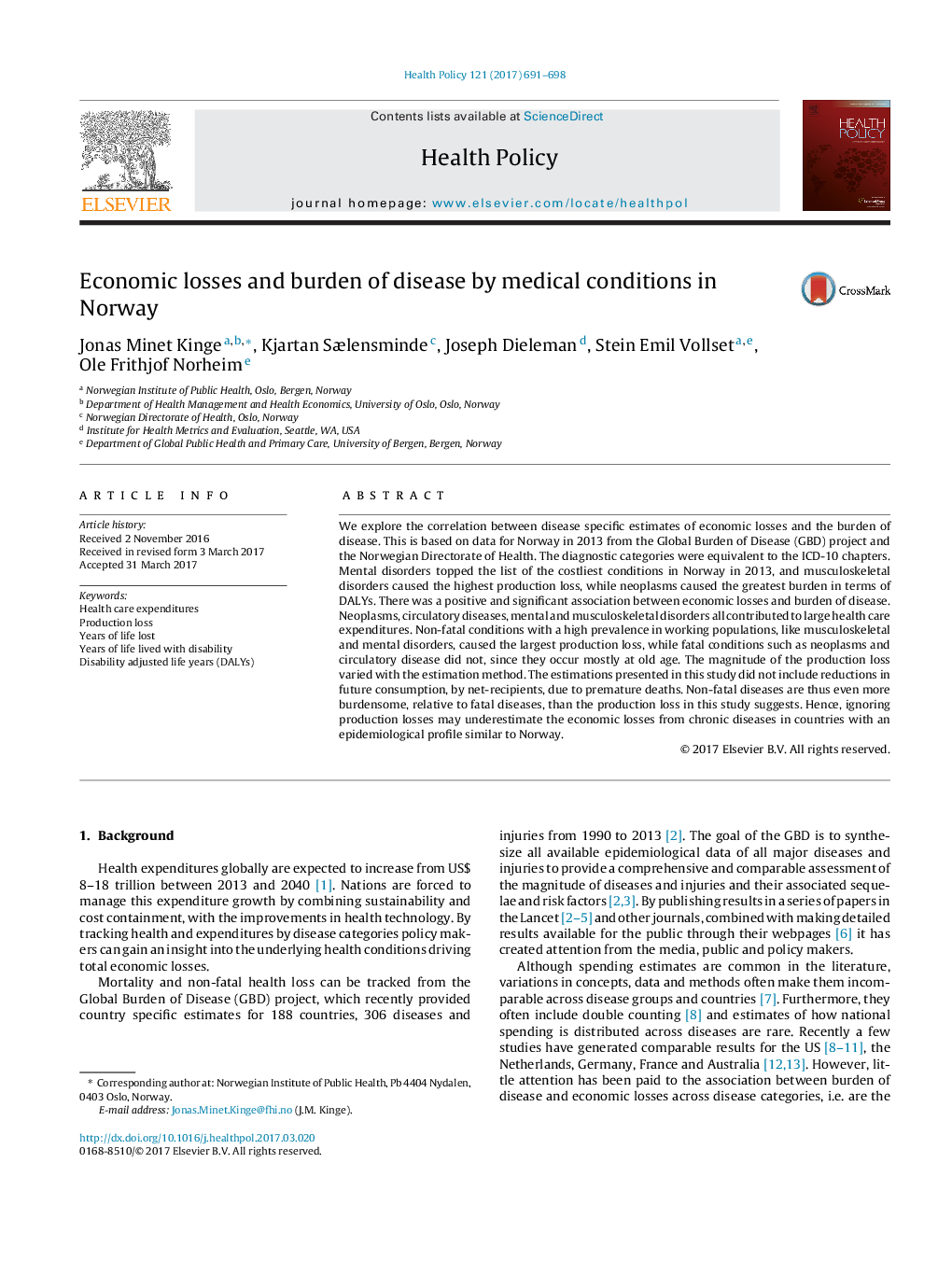| Article ID | Journal | Published Year | Pages | File Type |
|---|---|---|---|---|
| 5723325 | Health Policy | 2017 | 8 Pages |
â¢Mental disorders topped the list of the costliest conditions in Norway in 2013.â¢Neoplasms caused the greatest burden in terms of DALYs.â¢Economic losses correlate positively with the burden of disease.â¢Health service expenditures increased with both fatal and non-fatal health loss.â¢Production loss increased with non-fatal health loss.
We explore the correlation between disease specific estimates of economic losses and the burden of disease. This is based on data for Norway in 2013 from the Global Burden of Disease (GBD) project and the Norwegian Directorate of Health. The diagnostic categories were equivalent to the ICD-10 chapters. Mental disorders topped the list of the costliest conditions in Norway in 2013, and musculoskeletal disorders caused the highest production loss, while neoplasms caused the greatest burden in terms of DALYs. There was a positive and significant association between economic losses and burden of disease. Neoplasms, circulatory diseases, mental and musculoskeletal disorders all contributed to large health care expenditures. Non-fatal conditions with a high prevalence in working populations, like musculoskeletal and mental disorders, caused the largest production loss, while fatal conditions such as neoplasms and circulatory disease did not, since they occur mostly at old age. The magnitude of the production loss varied with the estimation method. The estimations presented in this study did not include reductions in future consumption, by net-recipients, due to premature deaths. Non-fatal diseases are thus even more burdensome, relative to fatal diseases, than the production loss in this study suggests. Hence, ignoring production losses may underestimate the economic losses from chronic diseases in countries with an epidemiological profile similar to Norway.
